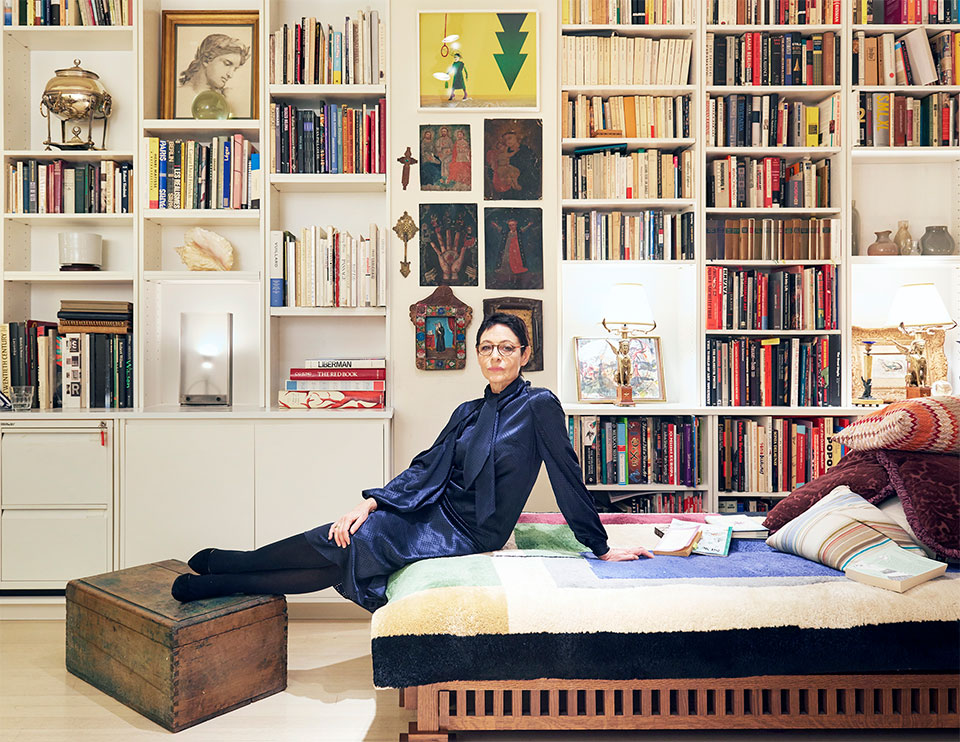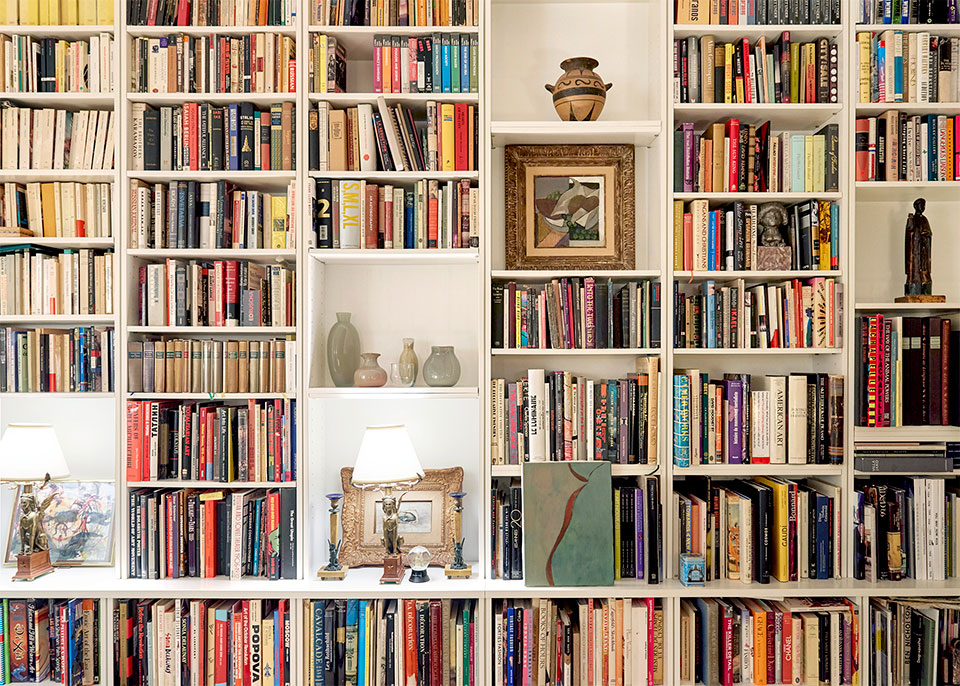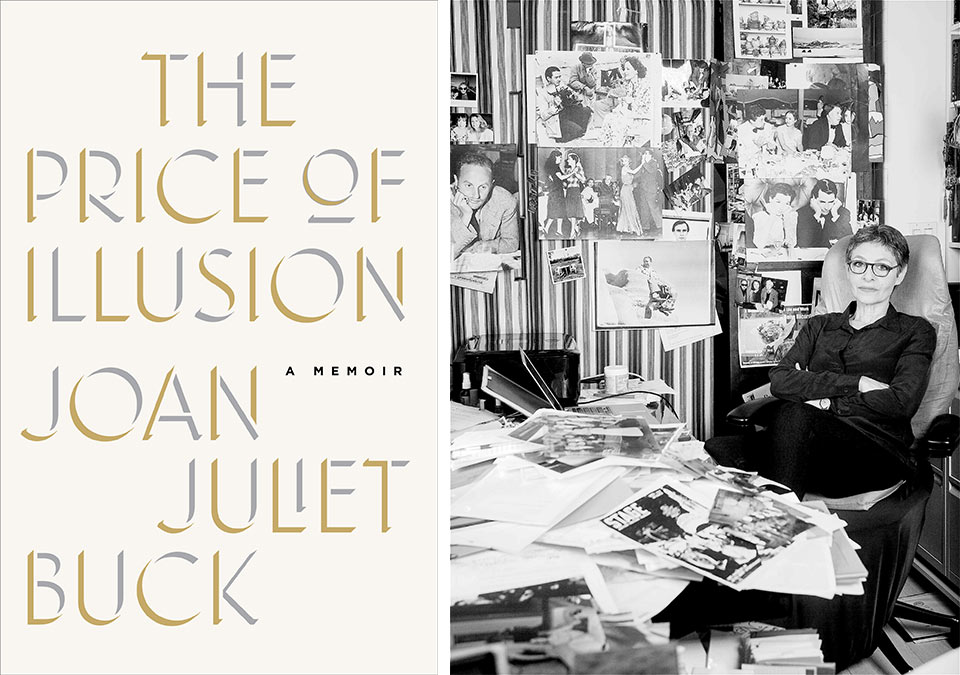
Our latest inductee into Tory Daily’s Cat’s Meow Hall of Fame is none other than Joan Juliet Buck, the illustrious writer and journalist — and the only American ever to take the helm of Vogue Paris. If you’re an avid follower of fashion, you’ve probably long devoured her stories in magazines, including Harper’s Bazaar, Vanity Fair, Vogue, The New Yorker, in which she chronicles the beau monde and its players in beautiful, compelling prose. Now, after decades spent aiming the klieg lights on others and telling their stories, she’s finally stepped into the spotlight herself. This March, nearly 50 years after starting out as a book critic for Glamour — inaugural assignment: reviewing Tom Wolfe’s The Electric Kool-Aid Acid Test — Buck has published her first memoir, The Price of Illusion.
And what a life she’s led — the native Californian’s education in the glamorous side of life began right at birth. Her father was film producer Jules Buck, who partnered with actor (and now-Hollywood legend) Peter O’Toole on the company Keep Films; mom Joyce was an actress… and Lauren Bacall’s best friend. “Surface became everything, surface became my substance,’’ writes Buck, who also grew up in Paris, the Irish countryside and London. The cast of characters in The Price of Illusion, her third book after two novels in the Eighties, rivals any constellation in star appeal: Anjelica Huston, Charlotte Rampling, Donald Sutherland, Tina Chow, Manolo Blahnik, Hélène Rochas, California governor Jerry Brown, Karl Lagerfeld, Brian De Palma, Federico Fellini… But Buck isn’t merely name-dropping — these are very real people in her life in a very real way. Huston has been a close friend since childhood. Blahnik was her matron of honor. Sutherland, Brown and De Palma were former beaus. Also: Did you know Buck is an actress, too? Both on stage and in film — perhaps you caught her in 2009’s Julie & Julia, opposite Meryl Streep.
But Buck’s life isn’t all glamour and lacquer. Surface isn’t everything with The Price of Illusion, and you find yourself captivated and engaged in myriad ways. The memoir begins, for example, with an emotional punch in the gut. Buck is at the height of her career at Vogue Paris, when, at the inception of Milan Fashion Week, between landing at the airport and the Prada show, she’s pink-slipped by Condé Nast’s Jonathan Newhouse. And sent to rehab. For substance abuse issues. That she didn’t have.

Then there was her profile on Alma al-Assad, the wife of Syrian president Bashar al-Assad, for American Vogue in 2011 — published at the onset of the Arab Spring. “I didn’t want to write the profile and told my editor that we should hold off on the story,” Buck recalls in the book. “‘We need it for the March Power issue,’ he said, ‘and no one’s going to notice your piece anyway.’” Not quite. Public outcry was swift. Buck’s longtime contract with Vogue was terminated. “In the comments that I couldn’t stop reading,” she continues, “I was everything I most despised.”
In our interview with Buck — who now calls the calm of Rhinebeck, New York, home — she notes the difference between writing for others and turning the lens on herself: “With my own memoir I didn’t have to spare my feelings,” she says. And that’s what makes The Price of Illusion such a hypnotic read. Sure, the glitter factor and bold-faced names are mesmerizing, but it’s her lay-it-bare honesty that grips you; she isn’t afraid of being vulnerable, and the reader rides the roller-coaster highs and lows right with her.
Here, as we close out the 2017 Book Issue, our chat with Buck.
I decided to write a memoir now because…
There came a point when I had to figure out what had happened. What was my place in the world? Why did I so resent being known as the former editor-in-chief of Vogue Paris? Why had I been given that job in the first place, why had I only written two novels, what was it with the acting thing, where did I come from, where did I belong, and what was it about those particular men? Why had I accepted American Vogue’s assignment to go to Syria? I spent six years on the book; the self that I wrote about was made up of many people I had loved, many people who were gone, so many that the first draft was over a thousand pages long. I cut out six hundred pages to find my own self, in the end, separate from the others. But not separate from my father. That was the book’s revelation.
For someone who’s spent her career writing about others, the hardest part about turning the lens on myself…
The hardest part was going beyond the easy turns of phrase that had become my trademark in years of writing for magazines. The truth is further below the surface than sentences that look and sound so good; sometimes it’s choppy, sometimes it’s ugly, sometimes the words to convey it have no harmony, and that was what I had to set down. Profiles for Vogue and Vanity Fair are flattering puff pieces; I never wanted to hurt my subjects, but with my own memoir I didn’t have to spare my feelings. Writing the truth was the most exciting, liberating part of the book, well worth having paid the price of illusion.

So many friends and friendships that were not part of the core of the book. I mostly left Leonard Cohen out, but wrote about him for Harper’s Bazaar. I left out many, many comedic moments that weren’t part of the central story. They were just nice anecdotes, and I was telling a story.
Favorite line in the book…
”The more I give, the more I have to give, and the giving has no end.”
The memory that was the hardest to tell…
It’s hard to write about tragedies. My life was marked by the death of Ricki Huston, my godfather’s wife, when I was 20; every time I revised that part, it hurt again. It was devastating to write my mother’s death, and my father’s. There are as many deaths in this book as in a Victorian novel, so many that I feared a reviewer would scold me for melodrama, but that’s the way lives go. And instead of scolding me for melodrama, they were moved.
The books that changed my life…
The great poets and playwrights I read in school: T.S. Eliot, W.H. Auden, Shakespeare. The poets who accompanied my various heartbreaks: Rilke, Leonard Cohen. Tolstoy’s War And Peace and Anna Karenina, Nabokov’s Ada, Virginia Woolf’s Orlando and A Room Of One’s Own. When I was 23 I loved The Dice Man because it’s about random choices. Recent: Michael Cunningham’s The Snow Queen, William Gibson’s Pattern Recognition, Jennifer Egan’s A Visit from The Goon Squad, Daniel Mendelsohn’s The Elusive Embrace.
I combat writer’s block by…
I sit down and write and don’t think about being a writer.
Book I always give as a gift…
Hendrik Willem Van Loon’s Geography — a children’s book from 1932, illustrated by the author, that I find on eBay or AbeBooks or Amazon — because it is the clearest picture of our place in the world.
For me, writing is…
The only way to be happy.
A wink or a smile?
A smile. I’m not always sure what the joke is, so better to smile.
